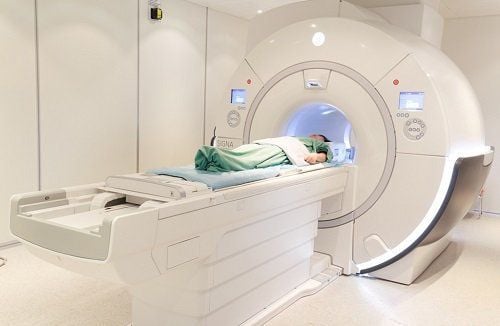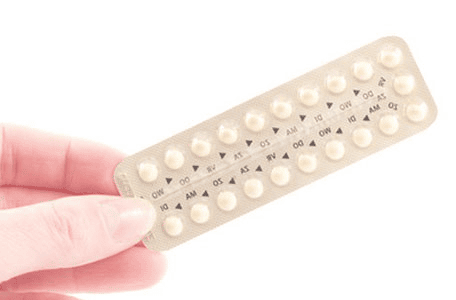This is an automatically translated article.
The article was professionally consulted with Specialist Doctor II Lai Thi Nguyet Hang - Obstetrician and Gynecologist - Department of Obstetrics and Gynecology - Vinmec Ha Long International General Hospital.Atypical breast hyperplasia is a precancerous condition that affects the cells in the breast. Atypical hyperplasia describes the accumulation of abnormal cells in the mammary duct
1. What is atypical hyperplasia of the breast?
Atypical hyperplasia of the breast is not a form of breast cancer. but it can progress rapidly to breast cancer . Over time, if the abnormal cells of atypical breast hyperplasia continue to divide and become more abnormal, it can turn into non-invasive breast cancer.2. Causes of atypical hyperplasia of the breast
Atypical hyperplasia occurs when breast cells become abnormal in number, size, or shape. The appearance of abnormal cells will determine the type of atypical dysplasia that is taking place:Atypical ductal hyperplasia: Causes abnormal cells to have a similar appearance to the cells. milk ducts of the breast. Atypical lobular hyperplasia: Causes abnormal cells to look similar to those of the breast lobe.

3. Complications of atypical breast hyperplasia
If diagnosed with atypical hyperplasia of the breast, the chances of progression to breast cancer are high.Women with atypical breast hyperplasia are four times more likely to develop breast cancer than women without atypical breast hyperplasia. The risk of developing breast cancer is the same between atypical ductal dysplasia and atypical lobular dysplasia.
Recent studies have shown the risk of progression to breast cancer over time of atypical breast hyperplasia :
At 5 years after diagnosis of atypical breast hyperplasia : Approximately 7% of patients Patients diagnosed with atypical breast hyperplasia will progress to breast cancer. At 10 years after diagnosis of atypical breast hyperplasia: approximately 13% of cases diagnosed with atypical breast hyperplasia will progress to breast cancer. At 25 years after diagnosis of atypical breast hyperplasia: approximately 30% of cases diagnosed with atypical breast hyperplasia will progress to breast cancer. The younger the time when atypical breast hyperplasia is diagnosed, the higher the risk of developing breast cancer, for example, women diagnosed with atypical breast hyperplasia before age 45 have an increased risk of developing breast cancer. breast cancer in a higher lifetime.
4. When to see a doctor
See your doctor for signs or symptoms that cause concern.Atypical breast hyperplasia often has no symptoms, but mammograms can appear abnormal. Atypical breast hyperplasia is often discovered when a breast biopsy is performed after an abnormality on a mammogram, or is discovered after a biopsy for another reason.
5. Diagnosis of atypical breast hyperplasia
Atypical breast hyperplasia is usually discovered after a biopsy to check for an abnormal area on a mammogram or to check for an abnormality found on physical examination.In cases where a more thorough evaluation of atypical breast hyperplasia is needed, surgery may be indicated to remove a larger tissue sample to be examined for cancer.
6. Treatment of atypical breast hyperplasia
Atypical breast hyperplasia is usually treated by surgically removing all of the abnormal cells and making sure that no carcinoma in situ or invasive cancer is present in the area of the lesion. Doctors also often recommend thorough breast cancer screening as well as prescribe medication to reduce the risk of breast cancer.Tests to monitor breast cancer: your doctor may order tests to screen for breast cancer. This increases the likelihood of breast cancer being detected early, making treatment more effective. Examinations and tests that may be done include:
Breast self-examination to detect abnormal breast changes. Regular clinical breast examination with a specialist. Routine screening mammograms. Magnetic resonance imaging (MRI) of the breast is used to screen, based on other risk factors, such as breast density, family history, or detected genetic risk factors.

7. Methods to reduce the risk of developing breast cancer
Methods to reduce the risk of developing breast cancer include:Use of preventive drugs: Like tamoxifen or raloxifene (Evista), taken for 5 years can reduce the risk of breast cancer. Tamoxifen is the only drug approved for use in premenopausal women, while other options for postmenopausal women include exemestane (Aromasin) and anastrozole (Arimidex). Avoiding hormone therapy after menopause: Researchers have concluded that combined hormone therapy used to treat menopausal symptoms increases the risk of breast cancer in postmenopausal women. Consider mastectomy: for women at very high risk of breast cancer, the benefits and risks of having one or both breasts can be weighed to reduce the risk of developing breast cancer. breast cancer in the future. Currently, Vinmec International General Hospital is the first medical facility in Vietnam capable of implementing breast cancer screening by combining 4 technologies: genetic testing, endoscopy, ultrasound and laboratory testing. immunity. In which, cancer screening with gene technology is a method that is considered a breakthrough in medicine.
Please dial HOTLINE for more information or register for an appointment HERE. Download MyVinmec app to make appointments faster and to manage your bookings easily.
Article referenced source: mayoclinic.org













